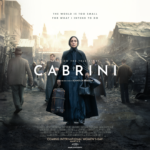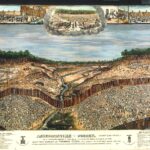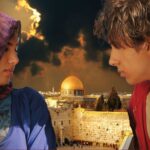A television ad from maybe twenty years ago, one of the many produced during the early “Say no to drugs” crusade, still haunts me. It showed a boy, somewhere between ten and twelve years old, earplugs in, a Sony Walkman (the iPod of the 80s) surely blaring the latest rock, fingers snapping. His hair was the latest butch cut, and his clothes the usual tee shirt and crumpled baggy pants sagging to the inevitable Nikes.
More memorably, his posture suggested the street-wisdom of the times, still very much with us: shoulders sloping to the left; head cocked arrogantly to the right. As for his expression, the mouth frowned ever so slightly, as if to say, “What do I care—but stay out of my way,” a chilling hint of the “adult” of the future, maybe a weird perversion of Aristotle’s magnanimous man. The eyes were completely shaded by sunglasses à la mode.
Did I mention there was a voice-over? “Your clothes, you picked them out. The music, you picked that out too. The haircut—that was your choice.” (The voice briefly paused as the boy with his non-finger-snapping hand raised a marijuana “joint” to his lips.) And then, “Don’t ruin everything with drugs.”
My reaction, then as now, was one of disbelief. If the boy in question chose this and that according to the dictates of anyone but his parents, why shouldn’t his “smoking” habits follow suit? Somehow the high command in the war on drugs found no contradiction in banning drugs while advocating all sorts of faddish behavior, including schooling boys, who in a few years might be soldiers, in the finer points of looking like street hoods.
The “fashion,” as Conrad in Much Ado About Nothing would have it, is the fashion, but, as Borachio reminds him, “not so.” An appearance, or a “fashion” in Shakespeare’s language, ought to ideally have something to do with reality, but plain experience tells us that very often the ideal does not obtain; hence, good sense advises men to look beyond what they see. Still, if we cannot rely to some extent on sight, we’re bound to live in a constant state of fear
A brief example should suffice. When I see someone—maybe an acquaintance, maybe a stranger—walking toward me with a smile on his face, I assume good will. And in a healthy society, the assumption will be correct. When it ceases to be so, we’ve left civility behind and entered Hobbes’s state of nature.
Therefore, when I’m confronted with a frowning, surly youth on the street, staring behind dark sunglasses, challenging my right to be where I am or even to exist by his thuggish mien, I prepare myself for a confrontation, which may not happen but I’m meant to think will happen.
What bothers me in this reminiscence is the intentional fashioning of images of youth leading to manhood, which present a public face of violence and self-gratification. I will not say such images are all we see, but they appear often enough to be common.
In a world that has defined the transition from childhood to adolescence as an ever- broadening period of rebellion, the phenomenon of disrespectful and sometimes violent kids may seem normal. And with historical memory becoming shorter and shorter, it must seem so. The post-war West, with Elvis and James Dean, the Beatles and the Stones, the Sex Pistols and the Ramones, has taken the images, sounds, and attitudes of rebellion as, at best, a necessary rite of passage, a prelude to a dog-eat-dog adult world.
God Himself knows that I believe this is wrong. However, my question is simpler: Do we have to portray the young that way? Below are three pictures. The first, cropped from a current fashion ad, shows two boys about whom I need say very little because their pose and attire are not unlike those of the boy in the anti-drug commercial I described above—minus the sunglasses.
As for the second photo, which graced a greeting card at Cracker Barrel, I can only guess its date. The boy in the picture is joyful, and, although it was doubtless posed, unaffected—and over what? Hotdogs. His clothing might be from the forties, fifties, or early sixties. If it’s from the latter two periods, rebellion had indeed reared its ugly head, but it had not trickled down to contaminate childhood. Moreover, parents—notwithstanding the poison of Dr. Benjamin Spock’s philosophy of love them, feed them, and leave them alone—still insisted on manners, usually with immediate correction or approval. The delight of the boy gracing the Cracker Barrel card would have elicited loving smiles from moms and dads, aunts and uncles.
My third photo goes back many years and even crosses the ocean to England from around 1918. Unlike the other photos or the TV commercial, the subject is known. He is a twelve-year-old Anthony Powell, later author of a famous series of novels called A Dance to the Music of Time. Keeping the implicit teaching of the anti-drugs ad in mind, that’s just the age at which a boy starts to adopt the surly posture of a street tough. No doubt, that’s just what children in some utterly poverty-stricken districts of Edwardian/Georgian England did, kids whose parents didn’t care how they grew up.
Powell’s parents were, I suspect, more common. By no means wealthy, they did all they could to get him into the best schools, and their son, being sufficiently gifted, passed the necessary exams to make his parents’ dreams reality. The school in question was Eton.
The face of young Tony is not noticeably exuberant, but it’s anything but threatening. One might call it confident without a trace of surliness, angelic without a splash of syrup. The Eton collar suggests, not surprisingly, its own rite of passage, namely, to public life. But there are no illusions about that; a boy of that age knew the “rite” was no cakewalk. It might lead to Oxford or Cambridge, or it might not. It might result in a degree or being “sent down.”
Indeed, Powell’s memoirs present anything but a rosy picture of what “public” school could guarantee. In chronicling the fortunes of his classmates in the Eton Society of the Arts, he describes a very mixed bag. Some, such as Harold Acton, did well; others failed of their expectations, a few miserably, dying as alcoholics, homosexuals, drug addicts, or all three. The best opportunities life could offer—even at Eton—gave them no guarantee of fame and honor.
My point is not that the good old days paved the primrose path to virtue for boys, for kids of the old school, whether in England or America. A promising boy at almost any time over the last two hundred years succeeded or failed largely according to his character. What concerns me is the expectations a civilization has at a given time.
Character does not drop out of the sky; it is nurtured, in part by parents but also by society at large. The signposts that mark the path of maturity are the images we place before our young—in this case, before those who will become young men. The three pictures in this article display the nature of certain expectations. Twentieth-first century expectations are all too clear in the first picture. Are we comfortable with the potential it suggests?














